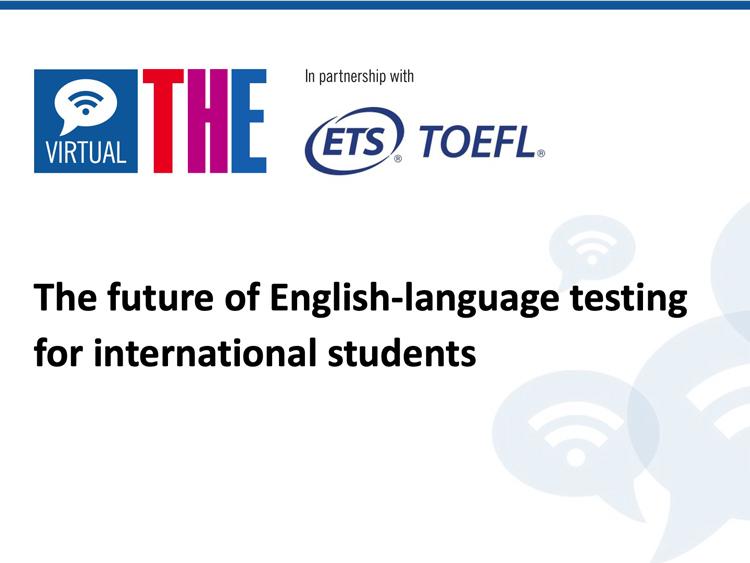
Effective ways to keep online language students motivated
A learning designer discusses tried and tested strategies to keep students engaged in online language courses
As an English as a foreign language instructor in Korea, it was hard to ignore the difficulty colleagues faced when learning Korean. Perhaps naively, I assumed language teachers would be highly motivated to learn their host nation’s tongue. There were several opportunities to do so and thus experience the intrinsic benefits that come with understanding a culture through its language on top of opportunities to spark friendships that would not be possible without this language knowledge.
The question of why others were not able to learn the language easily sat at the heart of my doctoral thesis and as a learning designer today, I would argue that what I learnt about the hurdles experienced by language teachers and how to overcome them has wide application for teaching online at tertiary level.
Get it right from the start
After completion of the curriculum development and design of your course, pilot it ahead of time by recruiting, monitoring and seeking feedback from a small, but diverse group of students with no experience of your course in a live setting.
Inevitably, you can then identify challenges, obstacles or difficulties. Often these may be technical, but they may also relate to pedagogical issues such as how well scaffolded and explained processes are (or not).
When developing and designing your course, ensure it is “demotivation proof” by providing both regular required and optional means for students to engage with each other such as active participation in a discussion board ahead of, during and after every task.
- Resource collection: English as a second language in higher education
- Four ways to integrate the SDGs into English language classes
- Managing cognitive load for EAL – and all – students
Open and maintain the lines of communication
Introduce yourself online in written and video form ahead of the beginning of the course and provide multiple means of contact including your email address and phone number.
Set a clear timetable so that students understand when they can get in touch. At least one of these online pathways should be synchronous, face-to-face by way of meeting, as opposed to written correspondence. Ensure student confidentiality and safety by allowing one-to-one interaction. Balance work and life by clarifying how and when you can be contacted and the period in which students can expect a response.
Ensure that students have an individual, regular allocated appointment time and create space in your contact timetable for students to request additional time with you. This means of engaging with you, such as during a private and live interaction at one point during every task allows clear insight into whether and why students may be struggling as issues arise.
Allow space for all group, small group and individual responses to any issue(s) that arise. For example, if students have problems with literature review, provide timely remedial resources. These might include writing guides, annotated exemplars, templates and self-study and assessment grammar and writing tasks. If appropriate, run through the resources during a group tutorial.
Scaffold
Scaffold by providing clear explanations at every step as students move through units and modules. Provide a clear rationale for the methodological intent of each new learning action at the outset and ensure you include all relevant information on how to complete the necessary associated tasks/activities and what will then follow and why, as well as how the student is expected to engage with it/them.
Content should be global in order to be culturally inclusive at the broadest level. Provide the means for students to appropriately engage with it culturally when they work collaboratively and/or individually. Some topics more readily lend themselves to this approach, including the impact of global warming, the motivation to reduce it and the importance of free speech and expression. In each case, students could do an individual case study on these topics’ importance to their home countries and then compare with another student with a differing cultural perspective.
Good content is vital, but so too is the opportunity for students to engage with it in multiple ways. Offer options. Sure, they can write a 500-word review or report, but some might prefer to post a video equivalent or conduct an oral presentation individually, in pairs or in small groups.
Inclusiveness extends to the myriad ways students learn. Keep a strong emphasis on (whenever appropriate) “non-studenty” tasks, such as analysis of current, relevant topics in the media from multiple, even opposing standpoints and use a diverse selection of resources – for example video, print media, journalism, documentary, opinion, testimony and music, in addition to academic material.
Make sure all your students have an adequate understanding of and support to access and use all aspects of technology you will be using in your course by providing relevant information upfront in the form of online tutorials, links to university resources and by sending information via email about specific elements. Signpost them to other staff within the institution who can also assist. Never assume prior understanding and experience.
Despite implementing all of these strategies, there will still be students who disengage. Keep an eye out for red flags, particularly initial and early reluctance to participate in online discussions or a gradual pulling back and an increased absence from discussion forums. These indicate potential or actual withdrawal of engagement. Reach out to any students who have not been online for more than a week. Academic or pastoral support will make all the difference.
Nigel Gearing SFHEA is a learning designer in ranga auaha aho (the learning and teaching design team) at the University of Auckland. The article is based on his paper Applying the lens of second language motivation research to interpret online learner amotivation and demotivation.
If you would like advice and insight from academics and university staff delivered direct to your inbox each week, sign up for the Campus newsletter.



